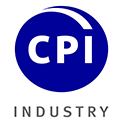GCC region identified as high-growth area for polyurethane
Expected demand owing to energy-efficiency policies spearheaded by United Arab Emirates, Saudi Arabia and Kuwait, says Dow Chemical
Dubai, UAE, 6 November 2018: The GCC region offers high-growth potential for the polyurethane business, said Akil Sahiwala, Polyurethane Systems Leader (Middle East), Dow Chemical, who said that the expected demand is owing to the energy-efficiency policies being spearheaded by the United Arab Emirates, Saudi Arabia and Kuwait, which puts the construction sector in centre focus. Proactive efforts, he said, can be attributed to the GCC region’s energy consumption being driven largely by the residential sector, at almost 47%, compared with the global average of 25%, as noted during the most recent World Future Energy Summit. “The measures taken include retrofitting of existing buildings and enhanced building envelop construction,” Sahiwala said. “Moreover, there is a growing focus on introducing innovative technologies and materials, which improve the efficiency of buildings in these markets, especially with the rise of smart buildings and urbanisation.”
The region’s growing focus on both renewable energy and energy-efficiency policies, Sahiwala said, aims to regulate the dependence on fossil fuels, while meeting the growing energy needs. “These policies could, in turn, benefit the country through decreased investments in power generation and reducing wasteful consumption of resources,” he said. “Such measures encourage the growth of industries, such as sustainable construction and low-consumption appliances, among others. As a result, sustainable solutions, such as polyurethanes, are seeing an increase in demand among regional customers in these sectors, who are looking to address the energy-sustainability challenges.” This, he said, is owing to the applications of polyurethanes in construction, cold chain and appliances.
That said, Sahiwala added that the market has also been challenged to innovate, owing to demand. “In the past, some blowing agents have been a cause for concern, as they have been found to contribute to the depletion of the Earth’s ozone layer,” he said. “Blowing agents are known to support the superior insulation performance of closed cell polyurethane foam as a result of insulating gas retention in the cells of the foam.” As such, he said, Dow has conducted extensive research on low-GWP blowing agents to maintain and improve the insulation properties of polyurethane foams. “Increasingly, Hydro-fluoro-olefin (HFO) blowing agents with low GWP are replacing traditional hydro-chlorofluorocarbon (HFC) blowing agents to meet the proposed regulations,” he added. Sahiwala said that R&D efforts have been focused on combining best-in-class insulation performance with a more sustainable profile, with the new polyurethane-based solutions aimed to address the blowing agent challenge. “By controlling the foaming process, uniform cell structure is achieved providing consistent physical properties and high insulation value,” he said. “Performance benefits for appliances using these new foam systems include improved insulation efficiency, balanced processability, remarkable durability, lightweight and structural strength.” Additionally, he said, the polyurethane foams enable customisation, hence they can be tailor-made to meet customer specification requirements.
Hannah Jo Uy is Assistant Editor at Climate Control Middle East magazine. She may be contacted at hannah@cpi-industry.com

